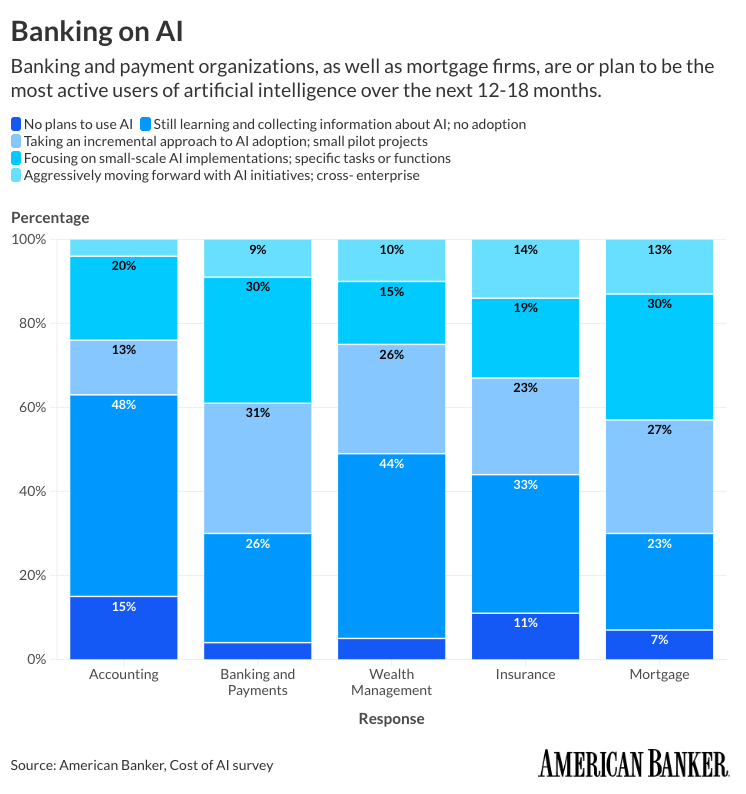DIRECTORY
AI Tool Directory

I’ve put together a database of 50+ AI and investing tools categorized by use case, where you can search, for example, by due diligence or AI agents or earnings data. Each company card has a short description and a link to the platform.
I did my best to add all relevant companies, but I know there are probably more out there. If you know of any that should be included, please reach out: [email protected].
I plan to add more data on each company, but I wanted to see what interests readers most first. So please reach out with comments!
To access this (free) database, please recommend AI Street to someone you think will get value from reading AI Street. (Please don’t send this to another email of yours; I can see where they go 🙂)
Share the link below and after they join, you’ll receive the database by email.

DATA
LLMs Aren’t Just for Language
A couple weeks ago, author and quant Ernie Chan told me that it's a misconception that LLMs are just for language. From last month:
"A lot of common perception is that generative AI is all about large language models, particularly for finance," Chan said. "But it is much broader than that. You should be able to train it on any data, such as market time series."
This concept really clicked for me once I saw what Stripe did with payment data.
The company built a transformer-based payments foundation model. Instead of training it on text, Stripe trained it on billions of payment transactions.
Conceptually, here’s generally how it works:
If you’ll roll along with me here, imagine you’re playing Plinko from The Price is Right—a fan favorite of American millennials (and yours truly).

In the game, you drop a disk through pegs into buckets with different payouts.
Now, imagine each disk is a payment dropped into a massive Plinko board that has more dimensions than just straight down.
TL;DR: Stripe’s LLMs drop each payment through millions of pegs (features) and learn where fraud “lands.”
Each peg represents a different factor—card type, device, location, velocity, etc. The disk bounces through the system based on its traits and history. And at the bottom, it lands in one of the fixed number of slots.
But unlike the game, with transformers, you don’t have a fixed number of “destinations.“ There are millions of slightly different landing spots—forming a high-dimensional space or vector/ embedding—in academic speak.
Also, LLMs aren’t told what characteristics are important. The model figures that out.
After seeing billions of transactions, the model surfaces patterns. Fraudulent payments tend to drop into odd corners. Legitimate ones settle into more stable zones. Behaviors cluster together.
This makes spotting anomalies easier. Stripe’s fraud detection rate on large users jumped from 59% to 97% overnight.
This is one of the few examples I’m aware of where a company has used transformer technology like this—not for language, but for structured financial behavior.
The other one I’m aware of is Netflix. The media company recently built their own LLM based on user interactions.
I messaged Ernie and asked what other data types can get the transformer treatment. He said shopping data would work. I imagine there are many more use cases.
If you’re building in this space, please reach out. I’d like to cover this trend further.
Takeaway: More companies will build their own models using transformer technology to uncover new insights from their proprietary data.

FUNDRAISING
Samaya AI Raises $43.5M to Build Finance-Specific LLMs
Samaya AI raised $43.5M from NEA, Eric Schmidt, Yann LeCun, David Siegel (Two Sigma), and Marty Chavez (ex-Goldman) to build finance-native AI tools. Its models are live at Morgan Stanley and select hedge funds. (Fortune, Press Release)
Built on a “lattice of experts” architecture—smaller models cross-check each other to cut hallucinations.
Designed for financial workflows: research, comps, due diligence, and outputs in Excel/PowerPoint.
New agent models economic cause and effect—used to simulate Trump-era tariffs.
Takeaway: This news just came out this morning, but features some well-known investors here and the first time I’ve heard of a “Lattice of Experts.” The “causal” macro research also seems compelling.

ADOPTION
Banks Keep Spending on AI With Varying Results
A new American Banker survey finds 70% of banks and payments firms are using or testing AI, though only half see clear efficiency gains. Costs are rising: cloud and model fees are up more than 20% for many, and core IT upgrades remain a major hurdle. Still, 80% of firms plan to boost AI budgets over the next year, even if the payoff is still hard to measure.
Takeaway: AI adoption is still in the early stages and this study shows we’re still in the experimenting phase.

Goldman’s Five AI Use Cases
Goldman is deploying a growing set of internal AI tools aimed at speeding up tasks like research, client prep, and IPO filings across the firm. (Business Insider)
GS AI Assistant
Used daily by 10,000+ employees to draft code, prep meetings, write presentations, and tutor quants.
Banker Copilot
Still in pilot mode, this tool drafts IPO docs, analyzes filings, and pulls client data to cut down bankers’ prep time.
Legend AI Query
Natural language search across firmwide data. Lets staff query internal databases in plain English — no SQL required.
Legend Copilot
Builds APIs and data models, helping developers keep Goldman’s internal systems organized and up to date.
Translate AI
Turns around documents in 9+ languages quickly, cutting delays on outsourced translation.
Takeaway: Current capabilities of AI surpass these use cases, showing that the tech is still being “digested” by companies.
Klarna Slows AI-Driven Job Cuts With Call for Real People
Klarna’s AI push went too far, says CEO Sebastian Siemiatkowski — and it showed in the “low quality” of customer service. After replacing 700 agents with bots, the fintech is now hiring humans to ensure customers can always talk to a real person. The company is still rebuilding its tech stack and developing an AI assistant to help users negotiate better financial terms. (Bloomberg)
Takeaway: Anyone who spends enough time with AI knows that it can do like 80% to 90% of a lot of work, but getting that last 10% to 20% is hard.

REGULATION
Fed’s Barr: Policymakers Should Be Ready For AI to Shake up Job Market
AI could dramatically reshape the U.S. job market—and policymakers need to be ready for the fallout, the Fed’s Michael Barr said last week.
Barr laid out two possible scenarios: one where AI steadily boosts productivity while leaving most jobs intact, and another where it replaces large chunks of the workforce, pushing many workers out of employment.
Transformative AI could imply a much smaller role for human labor—a development that would entail sweeping social changes and profound challenges for government.
He noted that some businesses are already using AI to help workers—not replace them—but warned that’s not a guarantee. Some roles may vanish altogether, and the shift could hit certain groups of workers harder than others.
The rise of AI, Barr added, could also complicate the Fed’s job of balancing employment and inflation. If AI changes who works, how they work, and how fast the economy grows, it might force central bankers to rethink some of their key assumptions.
Takeaway: If AI adoption takes off, it could hit parts of the workforce unevenly. Regulators should be ready. A fair concern.

WHAT ELSE I’M READING
The Future of SEO in an AI World (WSJ)
Norway Wealth Fund to Freeze Hiring on AI Benefits (Bloomberg)
Citizens Bank Chief Data Officer on Building GenAI (Tearsheet)
The pretenders, and kingmakers, to the bond throne (The Desk)
XTX Markets rides volatility to record European client volumes (Fnlondon)
Even a16z VCs say no one really knows what an AI agent is (TechCrunch)
Humans and machines join forces in Morgan Stanley’s credit trading revolution (International Financing Review)
Artificial Intelligence, Meet Private Equity. (Institutional Investor)


